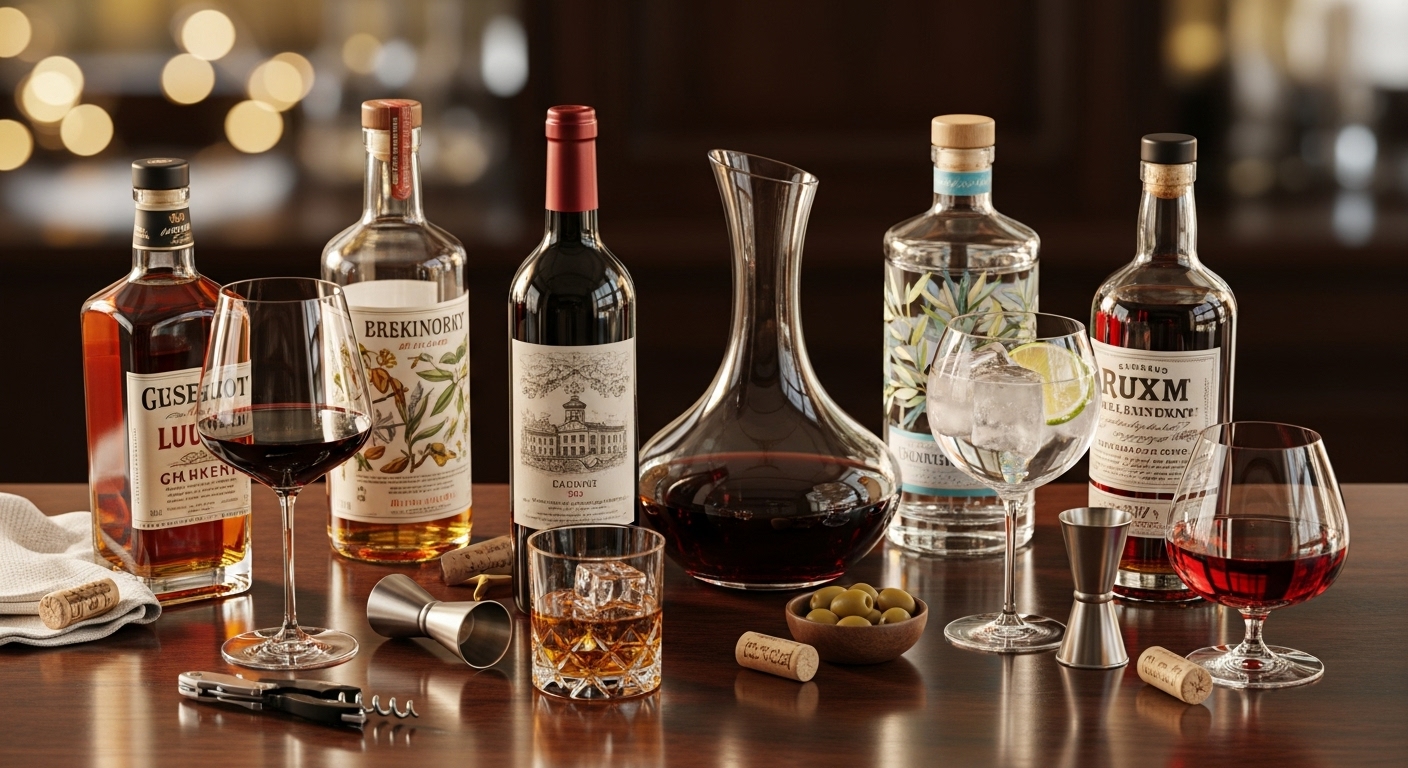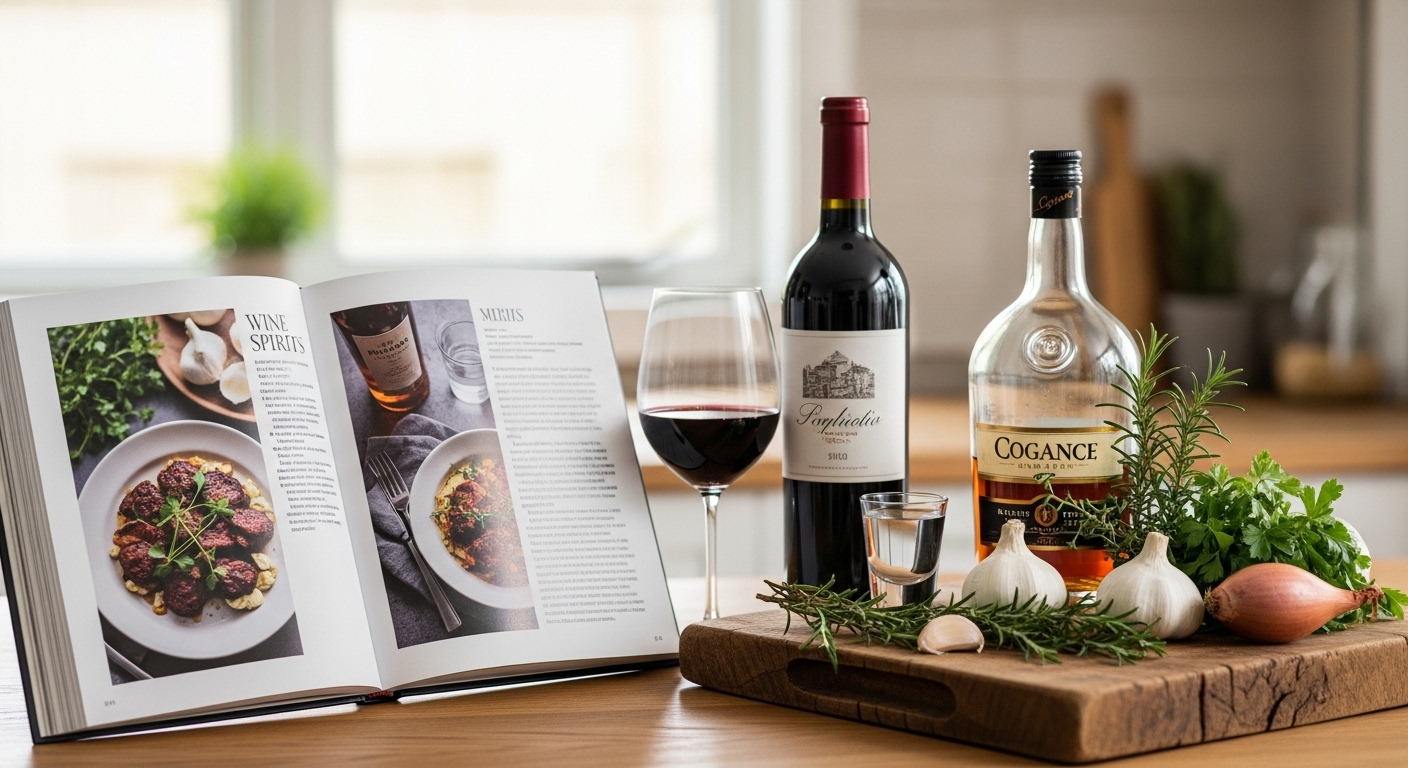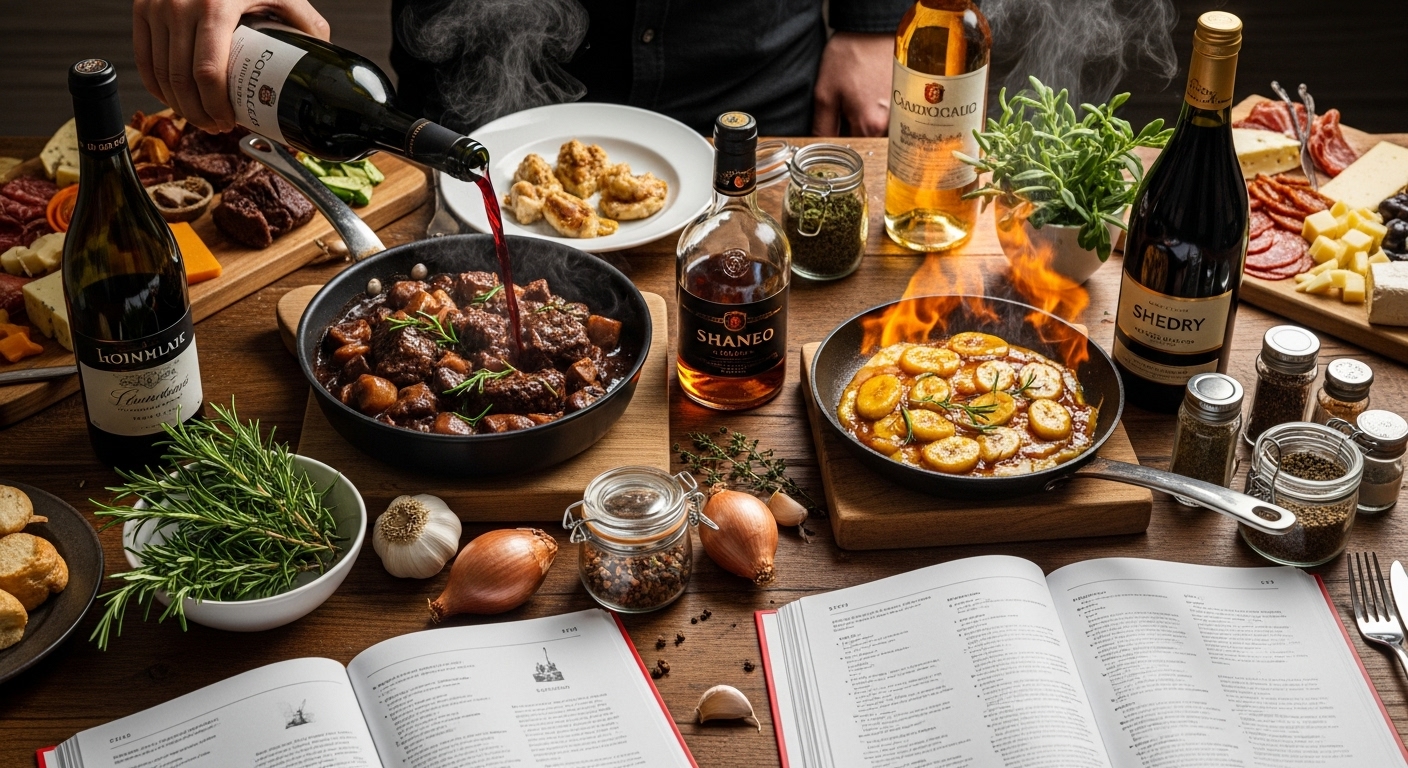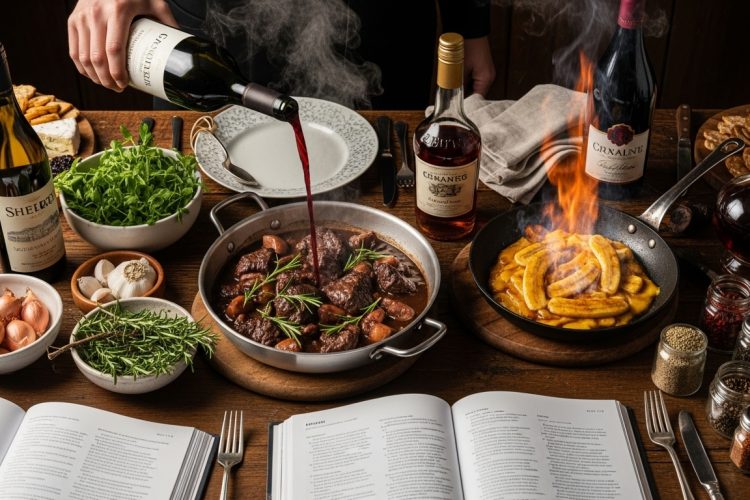Walk into any professional kitchen, and you’ll find more than just vinegar and oil. An array of bottles, wine, whisky, brandy, stands ready, not for the staff meal, but for the food itself. These are not mere indulgent additions; they are fundamental tools, as crucial as salt or a sharp knife. Spirits and wine perform a kind of culinary magic, unlocking hidden dimensions in your ingredients. They don’t just add alcohol; they conduct flavor, build complexity, and create a foundation that other seasonings simply cannot achieve.

The Science of Flavor Extraction
Alcohol is a powerful solvent. Its molecular structure allows it to capture and release flavor compounds that are insoluble in water or oil. When you deglaze a pan with wine after searing meat, the alcohol dissolves the caramelized, stuck-on bits (the “fond”), pulling their intense, savory essence into your sauce. This principle works with spirits, too. Flambéing a dish with a high-proof spirit like brandy isn’t just for show; the burning alcohol quickly caramelizes sugars and toasts proteins on the food’s surface, creating new, complex flavors in seconds. Even a small amount of a smoky single grain peated whisky can infuse a cream sauce or a braising liquid with a profound, smoldering depth that lingers on the palate.

Building Layers of Acidity and Sweetness
Wine, in particular, brings a dynamic balance to a dish. Its natural acidity cuts through the richness of fats, brightening heavy stews and creamy sauces without the sharpness of vinegar. A splash of dry white wine in a beurre blanc provides the necessary tart backbone that makes the butter taste richer and more refined. Simultaneously, the subtle fruit sugars in wine (and some spirits) promote caramelization and provide a gentle, rounded sweetness that counters salty or acidic components. This dual action of acid and sugar creates a more harmonious and complete flavor profile than any single ingredient could accomplish alone.

The Aromatic Foundation
Before a single vegetable is chopped, many classic dishes begin with alcohol. Think of a French coq au vin or an Italian risotto. The wine isn’t an afterthought; it is the cooking medium itself. As it simmers and reduces, its volatile compounds evaporate, leaving behind a concentrated essence of grape, fruity, floral, or earthy notes that become the very soul of the dish. Spirits like sherry or dry vermouth are used in a similar foundational way, their oxidized, nutty character forming the aromatic base for countless sauces and soups.
Taming and Transforming Ingredients
Beyond building flavor, alcohol acts as a tenderizer and a flavor carrier. In marinades, it helps penetrate muscle fibers in meat, carrying the taste of herbs and spices deep below the surface. More importantly, it interacts with pungent ingredients, mellowing their harsh edges. The sulfurous bite of alliums like onions and garlic is softened when sautéed with a splash of wine. The gamey intensity of liver is famously tempered by a pre-cook soak in milk or a brandy flambé, making the final dish more approachable and complex.

The Golden Rule: Cook What You Would Drink
The most important guideline for using these potent ingredients is simple: never cook with a bottle you wouldn’t happily drink. Cooking concentrates flavors, including flaws. A harsh, vinegary wine will make your sauce harsh and vinegary. A low-quality spirit with unpleasant chemical notes will impart those same notes to your food. The alcohol itself mostly cooks off, but the fundamental character of the beverage remains and intensifies. Your goal is to enhance the dish, not to dispose of a subpar bottle.
Spirits and wine are the secret weapons that separate a simple meal from a memorable one. They are the bridge between basic sustenance and layered, thoughtful cooking. By understanding their roles as solvents, balancers, and aromatic foundations, you move from following recipes to truly creating. That bottle on your shelf isn’t just for drinking; it’s an invitation to explore the deeper, more resonant possibilities waiting in your next meal.

